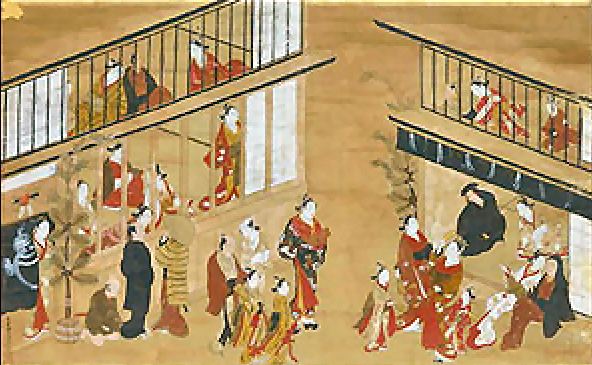Died 1752 | ||
 | ||
Miyagawa Isshō (宮川 一笑, 1689 – 20 January 1780) was a Japanese painter in the ukiyo-e style, primarily depicting kabuki actors, geisha, sumo wrestlers, and other elements of everyday urban culture.
The majority of Isshō's wokrs that survive come from the Kyōhō era (1716–1736). He was a pupil of Miyagawa Chōshun (1682–1752), who, in turn, was influenced by the works of Hishikawa Moronobu. Like many ukiyo-e artists, Isshō also produced a number of shunga, paintings of erotic scenes.
Isshō was banished from Edo in 1751, along with his master Chōshun, to the island of Niijima off the Izu Peninsula for a year. This came after a dispute arose over the payment for a painting commission in Nikkō. A Kanō school artist commissioned Chōshun to paint some of the walls of the Nikkō Tōshō-gū but refused or was unable to pay. In the ensuing confrontation, the Kanō artist and two others were killed by Isshō and Chōshun's son (who may have been the same person). Isshō was never pardoned and died on 20 January 1780.
